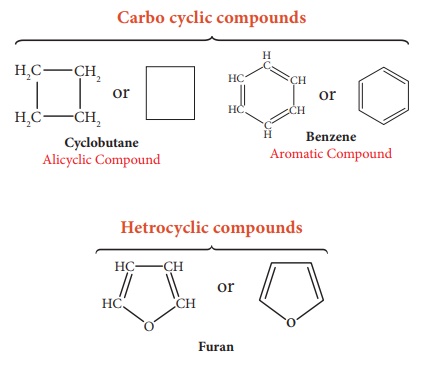Chapter: 10th Science : Chapter 11 : Carbon and its Compounds
Classification of Organic Compounds Based on the Pattern of Carbon Chain
CLASSIFICATION OF ORGANIC COMPOUNDS BASED ON THE PATTERN OF CARBON CHAIN
What is the significance of classification? There are millions of organic compounds known and many new organic compounds are discovered every year in nature or synthesized in laboratory. This may mystify organic chemistry to a large extent. However,unique molecular structure can be assigned to each compound and it can be listed by using systematic methods of classification and eventually named on the basis of its structural arrangements. In early days, chemists recognised that compounds having similar structural features have identical chemical properties. So they began to classify compounds based on the common structural arrangements found among them.
Organic chemistry is the chemistry of catenated carbon compounds. The carbon atoms present in organic compounds are linked with each other through covalent bonds and thus exist as chains. By this way, organic compounds are classified into two types as follows:
1. Acyclic or Open chain compounds: These are the compounds in which the carbon atoms are linked in a linear pattern to form the chain. If all the carbon atoms in the chain are connected by single bonds, the compound is called as saturated. If one or more double bonds or triple bonds exist between the carbon atoms, then the compound is said to unsaturated.![]()
![]()

2. Cyclic Compounds: Organic compounds in which the chain of carbon atoms is closed or cyclic are called cyclic compounds. If the chain contains only carbon atoms, such compounds are called carbocyclic compounds. If the chain contains carbon and other atoms like oxygen, nitrogen, sulphur, etc., these compounds are called heterocyclic compounds. Carbocyclic compounds are further subdivided into alicyclic andaromatic compounds. Alicyclic compounds contain one or more carbocyclic rings which may be saturated or unsaturated whereas aromatic compounds contain one or more benzene rings (ring containing alternate double bonds between carbon atoms). E.g.

Figure 11.1 depicts the classification of organic compounds based on the pattern of carbon arrangements and their bonding in organic compounds:

Related Topics